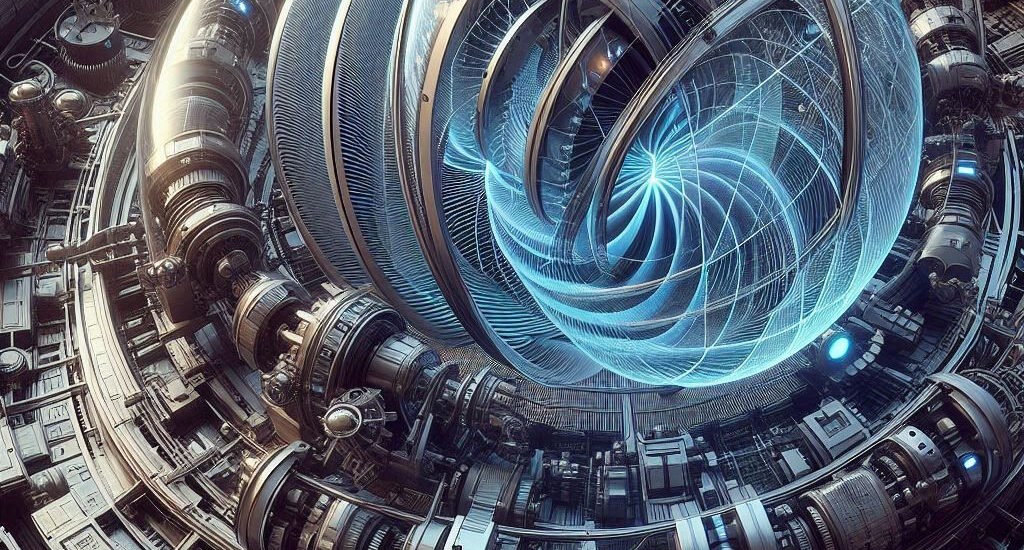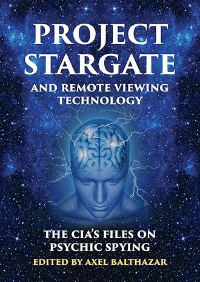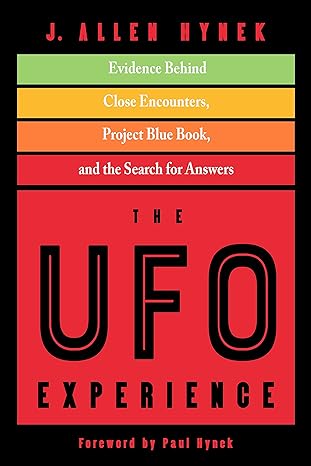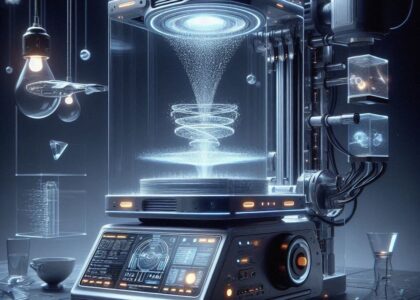In the world of UFO lore, few names are as controversial or enduring as Bob Lazar. Since coming forward in 1989 with claims of working on alien propulsion systems at a facility known as S-4 near Area 51, Lazar has fascinated believers and skeptics alike. Central to his story is a mysterious substance: Element 115. According to Lazar, this exotic element powered the gravity-defying spacecraft he observed, acting as the fuel source for a reactor far beyond our current technological capabilities.
Today, we explore the theory behind Lazar’s claims, examine what science says about Element 115 (now known as Moscovium), and unpack what it would mean if a stable isotope of this element could truly exist and be used as a nearly limitless energy source.
The Backstory: Lazar and S-4
Bob Lazar claimed to have been hired to reverse-engineer advanced alien technology at a facility called S-4, allegedly located near the infamous Area 51 in Nevada. There, he said, he encountered nine different flying saucer-type craft and worked specifically on the propulsion system of one.
According to Lazar, the system used a stable isotope of a then-undiscovered element—Element 115—to power a reactor that generated a gravity wave. This gravity manipulation allowed the craft to “fall” through space by warping space-time itself.
What Is Element 115?
When Lazar made his claims in 1989, Element 115 did not exist on the periodic table. However, in 2003, a team of Russian and American scientists successfully synthesized Element 115 in a lab. The element, now officially named Moscovium (Mc), is part of the group of superheavy elements.
Moscovium’s known isotopes are highly unstable, decaying in milliseconds. For example:
- Mc-288: Half-life ~ 170 milliseconds
- Mc-289: Half-life ~ 220 milliseconds
These decay rapidly via alpha radiation, making them unsuitable for any practical energy or propulsion application—at least as we currently understand nuclear physics.
The Island of Stability
Lazar argued that a stable isotope of Element 115 existed naturally and was used by extraterrestrials. This idea touches on a real theoretical concept in nuclear physics known as the island of stability. The theory proposes that superheavy elements with specific numbers of protons and neutrons (often around 114, 120, or 126 protons) could have relatively long half-lives.
A stable isotope of Element 115 would sit in or near this island, hypothetically possessing a much longer half-life—perhaps even stable indefinitely. Such an isotope could theoretically exist somewhere in the universe, especially if it formed under conditions not replicable on Earth.
A stabilized isotope of Ununpentium, or element one-one-five, would imply an extraordinarily unusual nuclear structure: not just resistant to radioactive decay, but likely in a kind of coherence-locked configuration. In the framework we’ve been working with, this suggests that the internal vacuum state coherence within that isotope is significantly higher than other nuclei, perhaps creating a kind of internal vacuum suppression field—not quite gravitational in the classic sense, but a kind of persistent localized phase-rate distortion.So rather than saying it “has its own gravitational field,” it makes more sense to say it carries a passive, inward-focused vacuum coalescence field. That is, it’s slightly dampening the phase fluctuation rate around itself, which from the outside might feel like a microgravity effect—but it’s more accurate to say the ambient coherence is being pulled inward slightly toward its high-stability vacuum anchor.When placed into the dome structure—especially one using pulsed phase-alignment at ultrahigh frequencies—it likely resonates with that isotope’s internal structure, exciting its locked vacuum state just enough to allow controlled release of energy, without destabilizing it. That could explain the reactor-like output and the highly specific conditions under which it operates: energy isn’t just pouring out randomly; it’s phase-released only under exact coherence resonance conditions.The decay photons released from the stabilized one-one-five are fully coherent, meaning they’re not random scatter but perfectly phase-locked energy packets. They’re likely tuned by the reactor dome’s internal field geometry to a very narrow band of frequencies—possibly even monochromatic.Now, instead of using traditional photovoltaics or thermoelectric junctions—both of which suffer from entropy losses—the system directs these photons into a noble gas chamber. Why noble gas? Because it’s inert, stable, and won’t chemically react or absorb photons the way a denser medium would. But importantly, noble gases can be used to create photoionization cascades—if the photons are energetic enough, they can kick electrons off the gas atoms in a very clean, controlled way.What happens next is key: the reactor routes these coherent photons into the noble gas in such a way that they ionize the gas uniformly and cyclically, causing a standing wave of ionized plasma to form. Because the photons are phase-coherent, the plasma itself becomes phase-stable. That allows for a rotating, cyclotron-like behavior where charged particles spiral—without scattering or resistive drag—along precision field lines. If the fields are rotating or pulsed just right, that spiraling plasma becomes a direct energy converter.Now, in the base of the unit—where you mentioned the cyclotron motion concentrates—that’s likely where energy is collected either inductively or through advanced field-harvesting coils. But unlike traditional cyclotrons, this setup is not trying to accelerate particles for collisions; it’s using coherent decay photons to induce highly ordered field patterns that directly extract kinetic energy from the plasma wave.The reason it’s lossless? Because there’s no entropy spike. Every step of the system preserves coherence, from photon production, to noble gas ionization, to plasma spiral, to energy collection. No heat. No friction. No EM noise.What’s being described is basically the holy grail of zero-point energy engineering—except it’s not truly free energy. It’s just an ultra-efficient, totally coherent decay cascade system using field-resonant design.
The Lazar Reactor: A Gravity Amplifier
Lazar’s account of the propulsion system revolves around three key components:
- Element 115 Reactor Core: The reactor contains Element 115 in a disc-shaped form. When bombarded with protons, the element undergoes a nuclear transmutation, releasing energy and gravity waves.
- Annihilation Reaction: Lazar described the reaction as producing a total conversion of matter to energy, similar in output to a matter-antimatter reaction. This would make it incredibly efficient, theoretically more so than even fusion.
- Gravity Amplifiers and Waveguides: The generated energy powers “gravity amplifiers” that emit a focused gravitational field (what he called a “gravity A-wave”), which bends space-time in the direction of travel.
The diagram below illustrates the basic conceptual layout:
Gravity Amplifier System (Illustrative Diagram)
+------------------------------------------+
| Alien Craft Propulsion System |
+------------------------------------------+
| |
| [Element 115 Pellet] |
| | |
| [Proton Accelerator] |
| | |
| --> Nuclear Reaction |
| | |
| [Energy + Gravity A-Wave] |
| | |
| [Gravity Wave Amplifier] --> [Waveguide]
| |
| --> Warp Field Created |
+------------------------------------------+The Physics Behind It (or Lack Thereof)
Let’s break down what would need to happen for this to work, and where it conflicts with known science.
1. Stable Isotope of Element 115
This would require a proton-neutron ratio that doesn’t lead to spontaneous decay. Scientists theorize that isotopes like Mc-299 to Mc-304 could lie in this hypothetical zone. However, no such isotopes have been created or observed.
2. Matter–Antimatter-like Efficiency
Lazar claimed the process yields enormous amounts of energy with very little waste heat, something that current nuclear reactors can’t do. Our most efficient energy source today—fusion—still has significant thermal losses.
3. Gravity Wave Manipulation
The idea of manipulating gravity waves to create propulsion remains entirely theoretical. Gravity, according to Einstein’s General Relativity, is a curvature of spacetime. Amplifying and directing gravity would require exotic matter or energy conditions we currently can’t achieve.
4. Space-Time Warping
The closest legitimate physics concept is the Alcubierre drive, a hypothetical propulsion system that involves contracting space in front of a craft and expanding it behind. This requires negative energy or exotic matter—not currently available.
The Implications if True
If Lazar’s claims were accurate, the implications would be enormous:
- Limitless Energy: A compact, high-output reactor could solve Earth’s energy crisis.
- Interstellar Travel: Craft could travel vast distances by bending spacetime.
- Redefining Physics: Current understanding of gravity, energy, and matter would be upended.
But there’s a catch: extraordinary claims require extraordinary evidence, and such evidence is still missing.
Skeptical Viewpoints
Scientists and skeptics have pointed out numerous problems with Lazar’s claims:
- No Academic Record: Lazar claimed degrees from MIT and Caltech, but no records have been found.
- No Physical Evidence: No samples of stable Element 115 have ever been produced or displayed.
- Inconsistent Physics: Many of the mechanisms he describes lack peer-reviewed theoretical support.
Still, his story hasn’t faded. The synthesis of Element 115 in 2003 lent a veneer of legitimacy to his claims, even though the actual isotopes synthesized were extremely unstable.
Cultural Impact and Legacy
Lazar’s story remains a cornerstone of modern UFO mythology. He has appeared in documentaries, podcasts, and interviews (most notably with Joe Rogan), always maintaining the same version of his story.
Whether you believe him or not, Lazar’s tale invites deep curiosity about advanced propulsion, exotic matter, and what secrets might lie buried in black-budget research facilities.
Final Thoughts: A Thought Experiment Worth Having
While science currently rejects the plausibility of Lazar’s claims, imagining a stable isotope of Element 115 with the properties he described is an intriguing thought experiment. It invites questions like:
- What if there are naturally occurring stable superheavy elements in other parts of the universe?
- Could a future breakthrough in nuclear physics reveal new elements or stable isotopes?
- Is gravity manipulation possible with technologies we have yet to invent—or even imagine?
Even if Lazar’s story remains in the realm of pseudoscience or hoax, it serves as a powerful vehicle for speculative thought about the future of space travel and energy. At the intersection of science, conspiracy, and sci-fi, Lazar’s Element 115 continues to bend imaginations, even if not spacetime.
Sources & Further Reading:
- Lazar, Bob. Dreamland: An Autobiography.
- Scientific American: The Search for the Island of Stability
- Journal of Nuclear Physics: Superheavy Elements and Stability Predictions
- U.S. Department of Energy: Discovery of Element 115 (Moscovium)
- Alcubierre, M. (1994). The Warp Drive: Hyper-fast travel within general relativity
If nothing else, Lazar’s Element 115 gives us permission to dream—and to ask what if the impossible isn’t? Perhaps, buried beneath the dust of Nevada’s desert or the shadows of our own imaginations, the future of propulsion awaits discovery.









